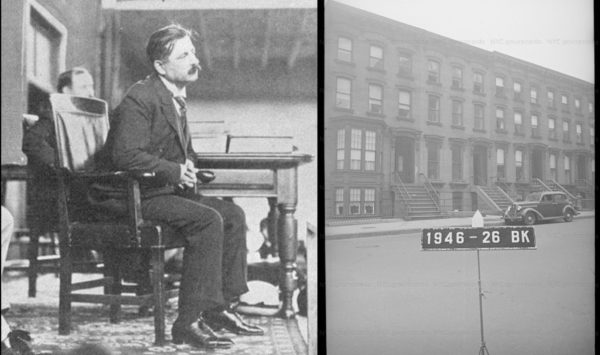THE FARMS LINES OF BROOKLYN (1874)
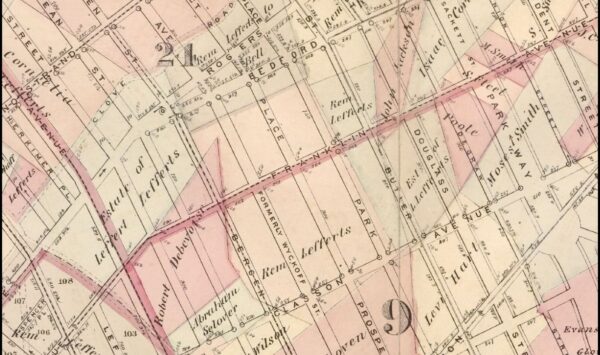
******************************************************************************************************************************** Brownstone Detectives investigates the history of our clients’ homes. The story you are about to read was composed from research conducted in the course of one of those investigations. Do you know the history of YOUR house? ******************************************************************************************************************************** Brooklyn was once one giant farm. At some point, as the farms began to be split up to be sold to developers – those who wanted to build rows of prized brownstones – companies also began to pop up which developed maps showing what types of buildings existed on every “lot” within the city. Although no longer used for fire insurance purposes, they are great tools for those owners wishing to research the histories of their properties. If you own a home in New York City, these maps can help you to determine how old it is, what else had been built in the area when your house was new, and, on some maps, the name of the farmer that had once owned your land. Find yours HERE. Follow @BrownstoneDetec Share ———————————————————————————————————————– The Brownstone Detectives Brownstone Detectives is an historic property research agency. Our mission is to document and save the histories of our clients’ homes. From our research, we produce our celebrated House History Books and House History Reports. Contact us today to begin discovering the history of your home.
THE SNATCHING OF ST. JOHN’S STOOPS (1970)
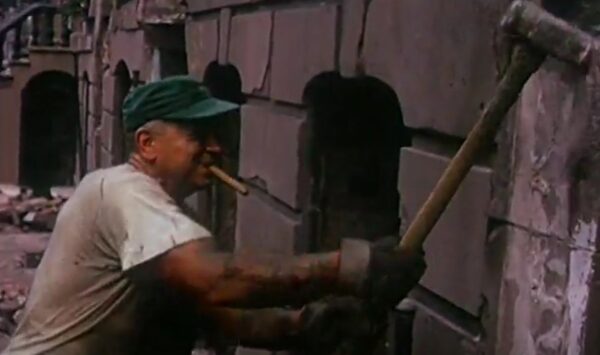
******************************************************************************************************************************** Brownstone Detectives investigates the history of our clients’ homes. The story you are about to read was composed from research conducted in the course of one of those investigations. Do you know the history of YOUR house? ******************************************************************************************************************************** In the 1970s, a row of stoops belonging to St. Johns Place brownstones were destroyed. You may notice them today as you walk down St. Johns Place and wonder at the stoop-less brownstones and wonder why they look so much like brownstone, but – for some reason – cannot be. These Victorian brownstones on the north side of St. John’s Place between 5th and 6th avenues – Nos. 35 to 67 – were, at that time, in an extremely derelict state. A part of the slums of the Park Slope section of Brooklyn, they were being transformed into working class housing, apartments for low-income families. A part of the conversion of these brownstones to apartments was the removal of their stoops. This extreme adjustment to the façades of these buildings had the benefit of allowing them to have just one entrance – on the ground level – through which all apartment dwellers would access their apartments. If you ever wondered what that destruction looked like, you’re in luck! In this short amateur film, these stoops can be seen being systemically removed from the fronts of their brownstones. The film is in color, lasts approximately seven minutes, and gives a taste of 1970s Park Slope. Follow @BrownstoneDetec Share ———————————————————————————————————————– The Brownstone Detectives […]
“MORALS OF MINNIE” ON GARFIELD PL. (1912)
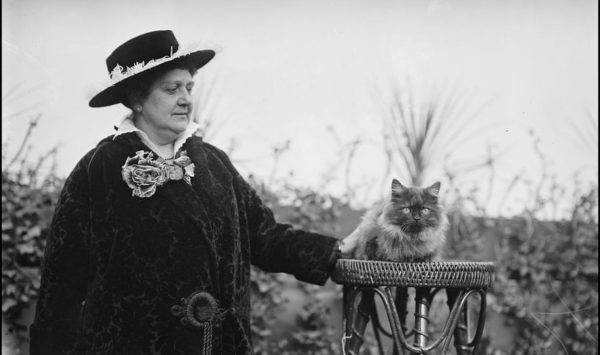
******************************************************************************************************************************** Brownstone Detectives investigates the history of our clients’ homes. The story you are about to read was composed from research conducted in the course of one of those investigations. Do you know the history of YOUR house? ******************************************************************************************************************************** In 1912, a Park Slope cat named Minnie found herself in some hot water. According to a complaint, Minnie’s claws had allegedly performed some serious mutilation to a neighbor’s roof. Here, now, are the details of: THE CURIOUS CASE OF THE CAT THAT CLAWED Location – Garfield Place (between 6th and 7th avenues). Suspect’s address – No. 182 Garfield Place, the Inasmuch Home for Aged Women. Claimant’s address – No. 178 Garfield Place, home of one William Albert Robbins, attorney. Suspect – one “Minnie,” a white Persian, and allegedly “immoral,” cat. THE WANDERINGS OF THE “INASMUCH” Around 1909, the Inasmuch Home for Aged Women moved from its previous location on Bergen Street to its new home at No. 182 Garfield Place in Park Slope between 6th and 7th Avenues. The Inasmuch (sometimes referred to as the “In-As-Much” by sloppy journalists) was a “charity” home for “aged women who are unable to get into other homes,” run through contributions and donations. It was founded in 1905, a few years before the move to Garfield Place. At that time, it existed in the Gowanus at No. 390 Douglass Street, and later moved to (what would become) the Boerum Hill section at No. 226 Bergen Street. By 1920, when it was finally closed, the […]
A BROOKLYN GENTRIFICATION STORY (1900)
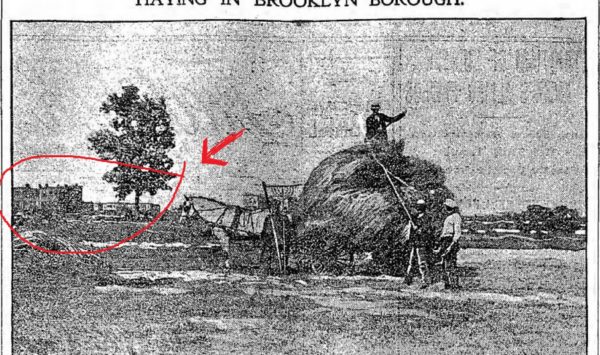
******************************************************************************************************************************** Brownstone Detectives investigates the history of our clients’ homes. The story you are about to read was composed from research conducted in the course of one of those investigations. Do you know the history of YOUR house? ******************************************************************************************************************************** (ABOVE: “Haying In Brooklyn Borough” shows farmers haying in the foreground while a row of new brownstones interlope in the background.) Chances are, if you are sitting anywhere within Brooklyn at this very moment, then you are sitting on what had once been a farm. Brooklyn began existing as farmland in the 1600s and it began to end that existence in the late 1800s and early 1900s. It was around this time that, in July of 1900, an intrepid Brooklyn Daily Eagle reporter took a trip out to the furthest reaches of Brownstone Brooklyn to see where the confluence of brownstones and farm horses collided. What he found made great copy. And it showed a more rustic world that had very recently existed in such neighborhoods as Bed-Stuy, Crown Heights, Prospect Lefferts Gardens, and other sections of the Eastern District (before houses were built there). The rural district that he trekked was the one that we now refer to as East New York. HAYING IN EAST NEW YORK As our reporter walked further and further south along Pennsylvania Avenue, he saw a district filled with streets and lots as far as the eye could see – which ran in this manner all the way down to Jamaica Bay. Those streets and […]
“HE CAME TO FIX THE ELECTRIC WIRE” (1938)
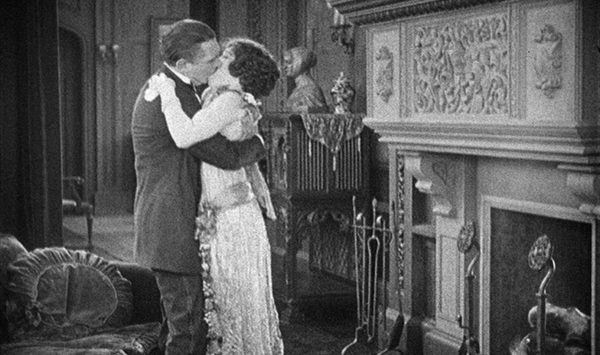
******************************************************************************************************************************** Brownstone Detectives investigates the history of our clients’ homes. The story you are about to read was composed from research conducted in the course of one of those investigations. Do you know the history of YOUR house? ******************************************************************************************************************************** “And if thow take a wyf unto thyn hoold, Ful lightly maystow been a cokewold.” With these words – and others – the Wife of Bath, in Shakespeare’s “Chaucer,” attempted to secure the hand of the knight by frightening him with the possibility of becoming a cuckold, a man whose wife is sexually unfaithful. The word has survived down the ages used in most derisive ways, but mostly as a lesson that men should pay more attention to their wives and take caution, particularly if they are pretty, that they do not “wander.” In 1938, this very tale unfolded for a mechanical engineer, whose wife “employed in a swanky Lexington Ave., Manhattan, hotel,” had the misfortune of being “caught in the act.” THE STORY ABOUT THAT “ELECTRIC WIRE” The whole story started when Thomas Goodfellow’s wife, Mary “Mae” Goodfellow, “a comely brunette,” one day left her husband and visited friends of theirs, Mr. and Mrs. Rafael of No. 628 40th Street. Along with her visit to Manhattan came her story that “she had had some trouble with her husband and asked for shelter.” Mrs. Rafael allowed Mrs. Goodfellow to remain and when the Rafaels left for Central Islip for the summer, “Mrs. Goodfellow was still there.” While Mrs. Goodfellow resides in […]
